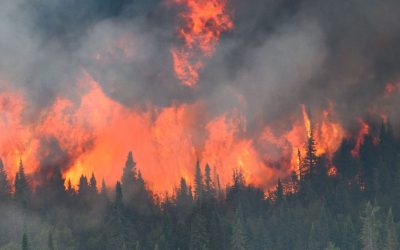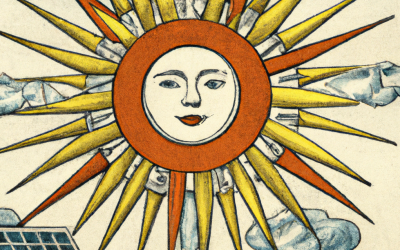WASHINGTON — Chances are you’ve never heard of John Christy. That’s somewhat amazing, because Christy, a director of the Earth System Science Centre at the University of Alabama at Huntsville, is one of the world’s most respected climatology experts. More to the point, he also is the lead author on latest report from the United Nations’ Intergovernmental Panel on Climate Change (IPCC).
That’s the report that garnered all the prime-time publicity in mid-January with its cataclysmic predictions of melting polar icecaps, malaria epidemics, Midwestern droughts, submerged islands and flooded coast lines from Maine to Florida.
Platoon
A small platoon of other Americans on the panel made the rounds of the nation’s high-profile media. They issued dire warnings about the horrible consequences that global warming will wreak if the United States doesn’t sign the Kyoto Protocol and agree to the draconian cutbacks in it energy use. Christy was conspicuously absent from the United Nations’ propaganda blitz.
Given his undeniable expertise and his prominence on the UN panel, you’d think the media would be camping on his doorstep. But only one — Barry Wigmore from the respected Times of London — bothered to call for a comment.
On the surface, there appears to be only one explanation. Christy, as it turns out, believes the United Nations is putting an intellectually dishonest spin on the report.
“The world is in much better shape than this doomsday scenario paints,” Christy told the British journalist, adding: “There were 245 different results in that report, and this was the worst-case scenario. It’s the one that’s not going to happen. It was the extreme case of all the different things that can make the world warm.”
Misleading
Christy, 49, says most long-range forecasts are misleading and, in many cases, downright wrong. One reason is most of the world’s weather stations, while they may initially have been placed in remote areas, now are affected by “urban heat zones.”
Buildings, he notes, have sprung up around them; the initial ground cover of trees and grass has been replaced with asphalt and concrete; and cool darkness has been replaced by electric lighting that generates heat throughout the night.
That’s why temperatures in the downtowns of large cities invariably are several degrees warmer than the temperatures in the surrounding suburbs.
The two computer models the UN relied on — one from Canada and one from England — were overloaded with data from urban areas, Christy says, making analysis of the data misleading.
Because of the over-reliance on warmer surface temperatures, Christy points out, today’s most advanced computer models don’t even portray current weather in an accurate manner. They get progressively more inaccurate when they try to project next week, next month, next year — let alone the next decade or the next century.
The weather tests Christy runs with polar-orbiting satellites for NASA and National Oceanic and Atmospheric Administration scientists at the nearby George C. Marshall Space Centre are far more accurate than the ones the UN panel uses.
Christy uses satellites to measure the temperature of the lower troposphere — the first eight kilometres above the Earth. If global warming actually is occurring, then the troposphere should be heating up just as a rapidly as the surface of the Earth.
So much for theory. In reality, the troposphere is only marginally warmer than it was, confirming Christy’s belief. Theoretically, if the Earth was heating up like the giant greenhouse of popular imagination, the temperature’s Christy’s satellites and weather balloons record would parallel those being recorded on land.
They don’t, because their measurements don’t suffer from urban warmth and other distortions. So why is the United Nations investing so much effort and money to tout the totally unrealistic worst-case scenario? The answer is simply money.
Wealth transfer
The Kyoto Protocol calls for a vast transfer of wealth from the United States, Europe and Japan to emerging nations such as China, India, Indonesia as well as the poorer nations of Latin America, Africa and Asia. Americans, on average, would sacrifice thousands of dollars in lost savings.
In December 1997, the U.S. Senate took a look at Kyoto’s numbers and voted 95 to 0 in favour of a resolution deploring the disaster the treaty would foist on the U.S. economy.
As a result, the Clinton administration never sent the treaty to the Senate for ratification, but initiated a sweeping program to try to implement much of it by regulation and executive order.
Most of those are likely to be scrapped by the Bush administration. Hence the only chance for the United Nations to superimpose its voodoo science requirements on the United States is to mount a last-ditch effort to panic the American public.
A UN report just last year warned that global warming would send temperatures soaring more than six degrees by the end of this century. That report produced a public yawn, so now the same “scientists” have increased the prediction to more than 10 degrees.
If that doesn’t produce the desired stampede, one wonders how far are they prepared to go? Twenty degrees, 30, perhaps 40? Stay tuned. The Earth may not be getting warmer, but the rhetoric is just starting to heat up.


